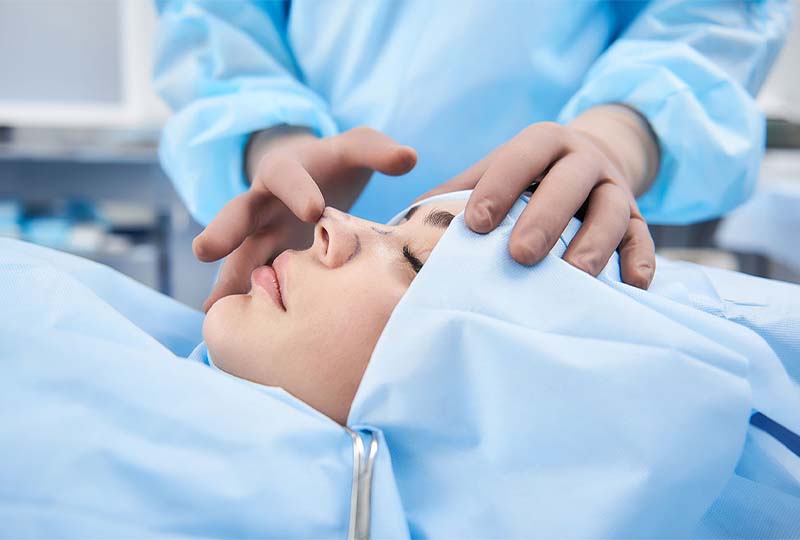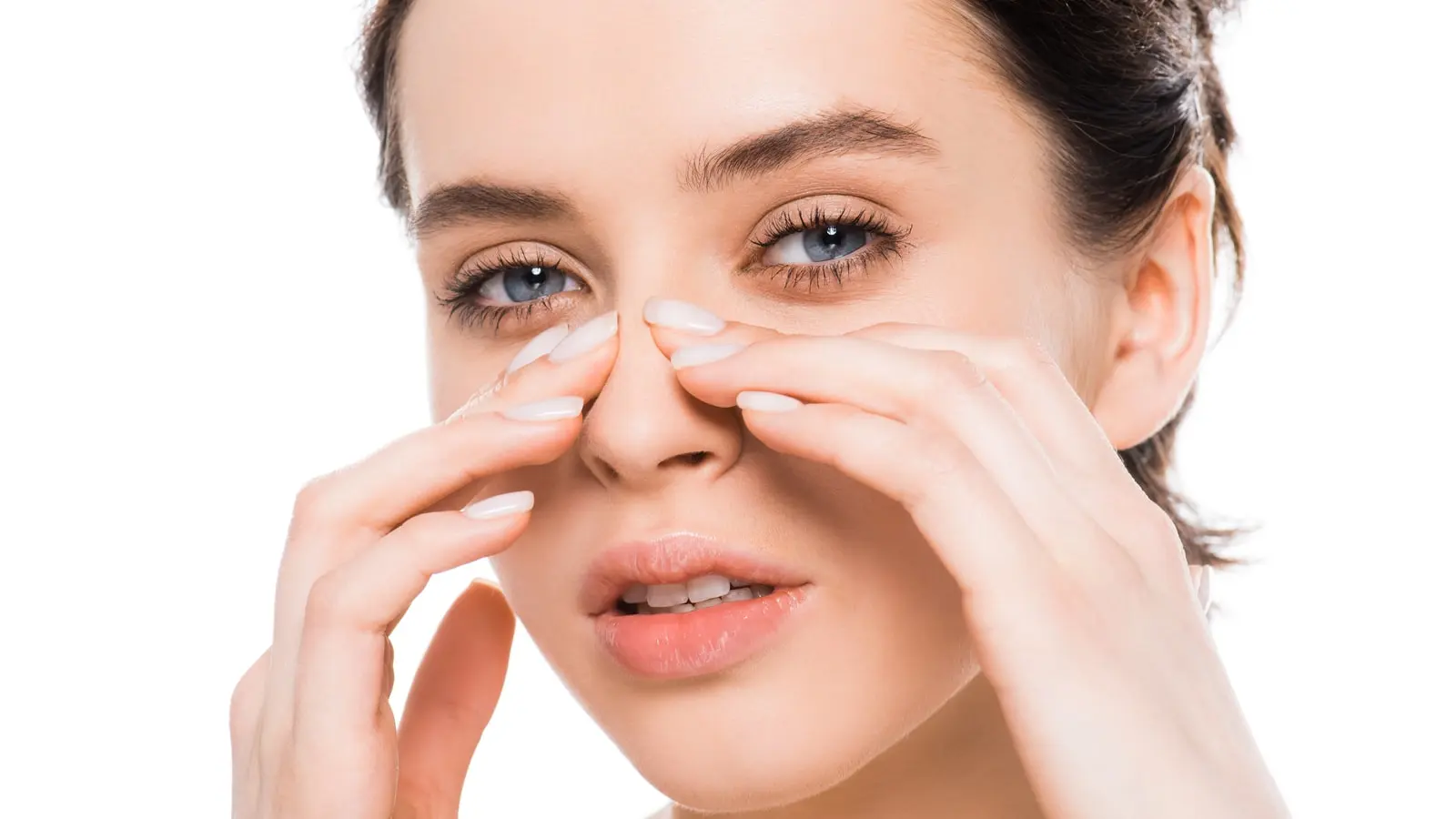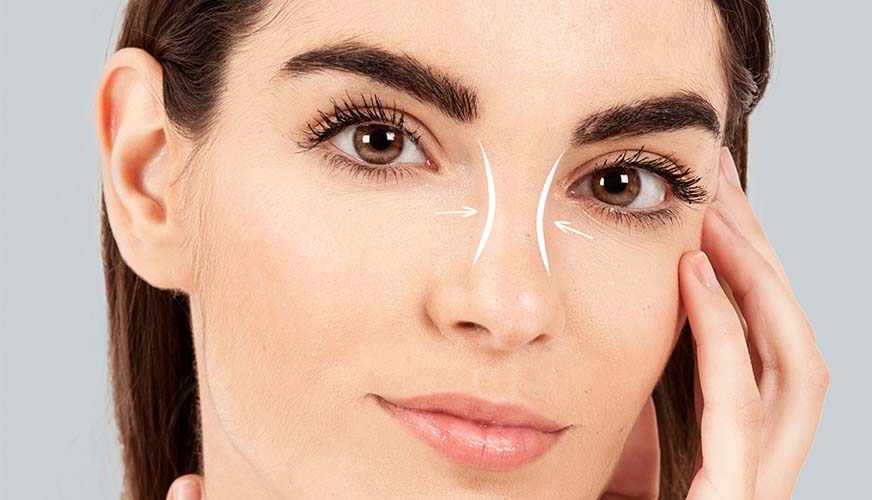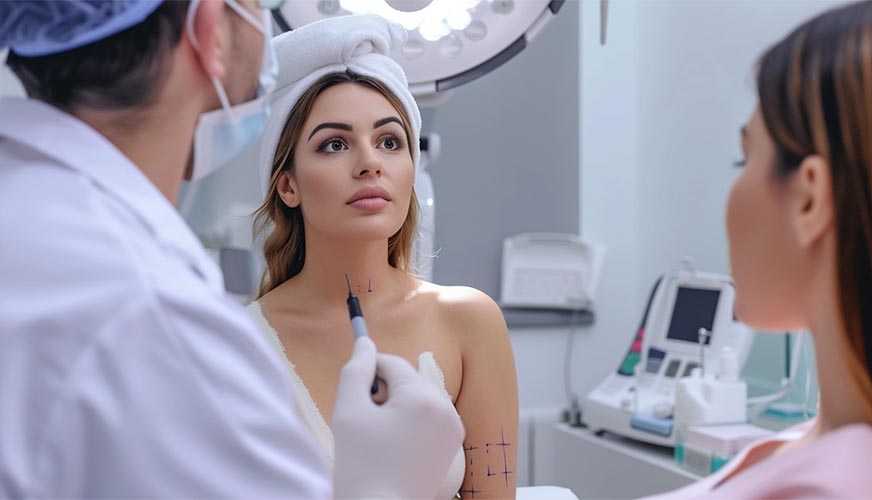22 August 2024
Nasal septum curvature surgery
Closed rhinoplasty
CLOSED RHINOPLASTIC SURGERY
During the closed rhinoplasty operation, an incision is made through the nasal cavity. The surgeon separates the skin of the nose from the nasal bones and cartilage that make up the framework of the nose. After that, the shape of the nose can be easily changed, and if it is necessary to reduce the volume to get the desired shape, it can be enlarged. For example, the surgeon cuts and shapes the hump of cartilage behind the nose to narrow the nose. Then the bone part is brought closer from the sides and the cartilage is sewn to its natural place on the upper part of the nasal septum. The protruding parts of the nose are removed using special tools. After reshaping the nasal bones and cartilage, the surgeon sews up the incision, including the soft tissues. To maintain the shape of the nose, modern splints are placed on the back of the nose, replacing plaster, which are removed within 7-14 days (depending on the swelling).
In recent years, the interest in nose aesthetic surgery in Azerbaijan has increased sharply compared to other surgeries. One of the main points here is to refer to the right surgeon. We have emphasized this because patients who undergo aesthetic surgery on the nose in many cases encounter the problems of difficulty in breathing or unsatisfactory aesthetic image. It should be noted that since February 2016 there has been an innovation in nose operations in Azerbaijan. Azerbaijan became the 4th country in the world to apply ultrasonic (piezo) rhinoplasty. Thanks to ultrasonic rhinoplasty, the use of hammer and other blunt instruments during the operation was stopped, and the postoperative rehabilitation period was shortened to one week.
One of the most relevant topics of recent days is the question of whether nose aesthetics should be performed by ear, nose, and throat surgeons or by plastic surgeons. What is your opinion on this?
Both ENT and plastic surgeons can perform rhinoplasty. The main required factor is that the surgeon who will perform this operation has sufficient control over the intranasal organs and their pathologies (nasal septum curvature, sinusitis, concha pathologies, etc.) and performs these operations at the same time when necessary. Since the vast majority of patients who apply to us for aesthetic surgery also have problems with breathing, sinusitis, and nasal discharge, I think it is more appropriate for ENT surgeons to perform aesthetic surgeries of the nose.
At what age should rhinoplasty be performed?
Rhinoplasty surgery should be applied after a person reaches adulthood. If there is a problem inside and outside the nose, the operation can be performed from the earliest age of 15-16 for girls and 17-18 for boys. Meanwhile, I should mention that there is no upper age limit. Of course, if the general condition of the patient is suitable. My oldest rhinoplasty patient was 61 years old. In the literature, there are reports that rhinoplasty was performed on 85-90-year-old patients.
Is there a season difference for rhinoplasty surgery?
- Rhinoplasty can be performed in any season. You just need to follow the doctor's specific advice according to each season. For example, he should not walk under the sun in the summer, and he should wait for the cold in the winter. In general, it should be protected from the sun for one month after the operation, regardless of the time it was performed. Because the sun's rays can cause color differences in the skin of the nose.
What should be paid more attention to before performing the rhinoplasty operation and when the patient is preparing for the operation?
- Since the nose is located in the middle part of our face, even the smallest intervention in the nose is felt at first glance. Before performing this operation, the patient's wishes, what the doctor can do for him and the capabilities of the surgery must coincide. In my opinion, the most successful operation is a nose that is natural, beautiful and complete with the face. We carefully evaluate the general health of the patient before the operation. Before the operation, we carefully examine the results of the anesthesiologist's examination, laboratory and instrumental examinations, and then make a decision on the operation. The operation can be performed under both general and local anesthesia. Meanwhile, female and male noses should be evaluated separately. So, men's noses should not be too small, the back of the nose should not be slanted but rather straight, and the tip of the nose should not rise too much. In women, on the contrary, the nose should be thin, the back of the nose should be slightly inclined and in harmony with the face.
In addition, taking into account the wishes of the patients, an approximate shape of the nose is prepared and shown using a special computer program before the operation.
As far as we know, this operation is performed in several ways. Which method do you prefer?
Rhinoplasty surgery can be performed in 2 ways: open and closed. It is more appropriate to operate on noses with relatively few problems in the closed method. In our practice, we prefer open surgery.
It is more appropriate to operate on noses with relatively few problems in the closed method. In our practice, we prefer open surgery. The advantage of this is that it is possible to eliminate even the smallest defects in the nose. By the way, intervening on noses with thin and thick skin, and performing open surgery on patients who have previously had an unsuccessful operation, allows to achieve the desired result.
Are there any patients who have been operated on in other clinics, have unsuccessful results, and do not like the shape of their noses? What difficulties do you face at this time?
- Let me note that choosing a doctor is a very responsible process. I think patients should spend enough time searching for a doctor. At this time, one of the most correct options is to get feedback from patients who have previously undergone surgery of that doctor. It will also help the patient to learn about the experience of the surgeon, the number of operations he has performed before. In our field, repeated operations are called revision operations. The doctor who performs the revision surgery must have sufficient knowledge of both intranasal structures and aesthetic facial analysis. Therefore, patients will make the right decision if they trust us with their first operation. Because we encounter a number of difficulties during secondary operations. The scar tissues formed after the previous operation, the lack of cartilage that we use to get a new image in the nose, and the need to remove a piece of cartilage from the ear or rib to get this cartilage create additional difficulties for the patient. If we add the difficulties created in breathing here, you will understand how responsible our work is. Dedicating my entire professional career to rhinoplasty surgery and benefiting from the experiences of the world's most influential rhinoplasty masters, Dean M. Toriumi, Tom D. Wang, and others, has led me to study this work in its intricacies. Therefore, it is more appropriate to perform nose aesthetic surgery by surgeons with sufficient experience in this field.
The most frequently asked questions by readers who write to us are related to Ultrasonic (piezo) rhinoplasty and tampons placed on the nose after the operation, bruising and swelling on the face. Are there any innovations in this field? In general, what can you say as the first surgeon to apply Ultrasonic (piezo) rhinoplasty in Azerbaijan?
What patients are most afraid of is bruising and swelling in the nose after surgery. The reason for the bruising and swelling is the fracture of the nasal bones. At this time, the blood leaking from these veins causes bruising and swelling. There is now a very special new method for this part of nose aesthetics that causes bruising and swelling. This is called Ultrasonic Piezo rhinoplasty. That is, we already cut the nasal bones with sound waves. This method cuts the bone and does not damage the soft tissues and veins at all. When it touches the bone, it cuts the bone, but when it touches the vein, it does not cause any damage to the vein and therefore does not bleed. There is no bleeding because there is no soft tissue and vascular damage, and there is no bruising and swelling because there is no bleeding. A patient who may have very severe swelling and bruising in a normal rhinoplasty procedure has very little swelling and bruising with the Ultrasonic method. That is, the patients operated by this method return to their normal lives very quickly. For several years now, we have not used nasal tampons during rhinoplasty surgery. There are even reports that this tampon has serious contraindications. Instead, we use 1mm thick silicone tubes so that the patient can breathe immediately after the operation. At the same time, we use ready-made thermal splints instead of traditional plasters. Since the operation is performed according to the appropriate principles, there is almost no pain. Because we operate on intranasal problems endoscopically, the patient receives less trauma. After 7-10 days, all patients can resume their previous work activities.
The price of CLOSED RHINOPLASTY operation is almost more expensive than open rhinoplasty operation, the operation is more difficult and takes longer.
For more information and price of nose surgery, contact +994 70 291 05 05 (whatsapp) or call.






Tags (0)
No comments